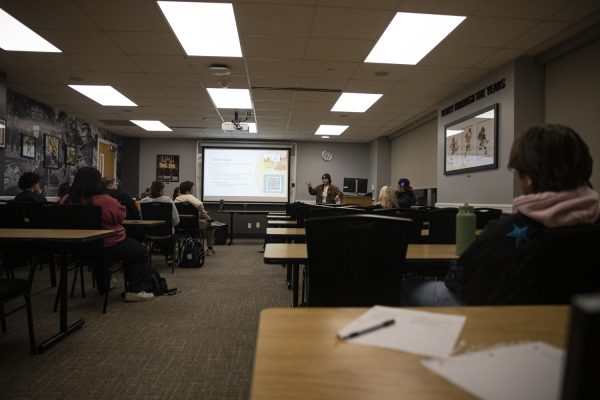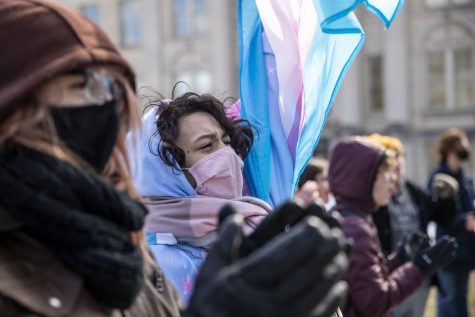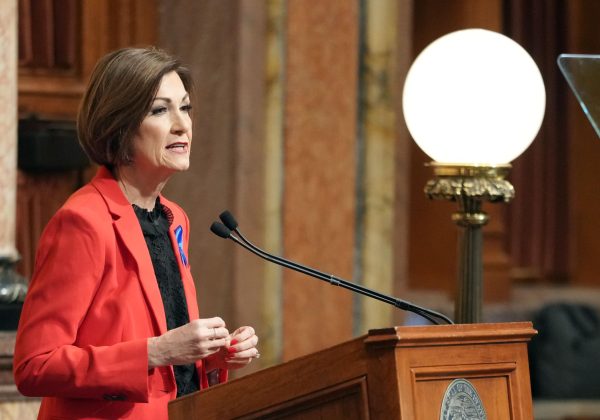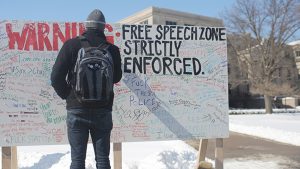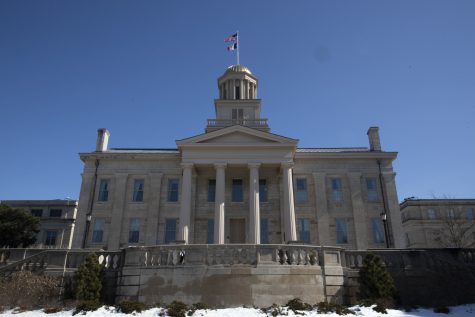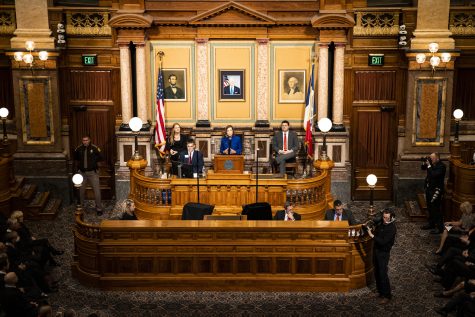Editorial | Holistic model healing for campus
The holistic model for campus safety presents innovations in policing for the University of Iowa. It’s important the university take the time it needs to deliver the lasting changes they’ve promised.
A uniformed officer wears a face shield and holds a riot shield on Wednesday June 3, 2020 outside the Old Capitol building. Protesters chanted, “Take off your riot gear; I don’t see no riot here” before leaving officers at the building and heading through downtown.
The University of Iowa’s Reimagining Campus Safety Action Committee is calling for feedback on its prototypes for the future of policing on campus through March 12.
The committee formed in June following protests against racial injustice earlier in the summer, particularly in light of the violent treatment of protesters by the University of Iowa Police Department, among other law enforcement groups.
The university may be one of the only institutions in Iowa that is able to reimagine and restructure police and safety. Others may be limited by a bill proposed in the Iowa Legislature that, if passed, would withhold state funds from any city or county that reduces the budget for its local law enforcement.
A change in university policy impacts more than just the students, faculty, and staff of the UI. It would affect the Iowa City community at large and could serve as a model for other colleges and towns.
Our endorsement
Of the plans presented, The Daily Iowan editorial board supports the Holistic Approach to campus safety. This prototype has been the most popular with students and has been endorsed by local action group the Iowa Freedom Riders.
The holistic model proposes creating a hub of resources on campus that would direct people in need to the proper agency. Dispatchers at the central space would also be able to send responders in ongoing situations but would shift focus away from UI police and toward alternative assistance and protection.
The holistic approach would also increase funding for programs that support members of the campus community who belong to historically marginalized groups. The prototype focuses on initiatives that provide housing and food security and mental health resources.
The holistic model represents the largest shift away from the status quo and presents genuinely new ways of operating at the UI.
Sincerely committing to the ideas behind the holistic approach can help prevent problems in our campus community before they happen. It would make students feel more valued by the university and reduce the ongoing harm of police while keeping our community safe.
Why the other plans aren’t enough
The other plans presented by the Reimagining Campus Safety Action Committee are new iterations of the same patchwork fixes we’ve seen enacted time and time again across the country.
Committing to new training and recruiting more diverse staff under the Refocusing Accountability model does nothing to alter the deep-seated and pernicious roots of America’s police forces. It does nothing to address the systemic issues of racism and inequality at work in our community. It does not provide necessary support to marginalized groups who have for so long been subject to this inequality. Black students make up 3.1 percent of the UI’s enrollment. But according to data released this fall, Black people were in 38 percent of documented incidents of use of force by the UI police — the majority of which did not involve students.
Establishing a community oversight committee provides no compelling motivation for UIPD or the university at large to change. Without access to real authority, which the university is unlikely to actually grant, the committee is limited to suggesting policy and reviewing use of force complaints.
The Refocusing Accountability and Community Oversight plans leave room for the university to appear to change while leaving the current system relatively untouched. We should not allow the university to go through the motions of caring in an effort to calm public opinion, only to postpone meaningful change indefinitely.
The university should take seriously its early promises of “dismantle[ing] current structures in order to build a better future” by embracing the holistic approach’s vision of campus safety and community care.
Changes in university leadership are cause for concern
The committee aims to present its recommendations to UI President Bruce Harreld in early spring and have a new structure in place “to support the collective vision of the campus” by July 1. Though these goals show a commitment to timely reform, it is unclear whether the committee and the UI community have had enough time to fully consider and analyze the proposals.
The prototypes presented for public comment lay out the broad strokes of each plan but leave many details blurry, with no word as to when they may be clarified. The committee has also faced scrutiny because of its delay in inviting the public comment on the plans, and has since extended its comment deadline to Friday.
Still, the early spring timeline announced by the university does not leave much time for the committee to formulate its final recommendations.
Part of the rush in this process is the committee’s objective of presenting their recommendations to Harreld before he leaves the university. If the presidential search committee follows its proposed timeline, a new president will be selected by the end of April.
Though Harreld, who announced his retirement in October, appointed members of the committee, it seems strange that he will decide the future of campus safety when his time at the UI is drawing to a close. What if a new president holds differing views of the direction of campus safety?
Harreld’s upcoming departure reduces his stake in the outcome of this process. Regardless of his intentions with the Reimagining Campus Safety committee, Harreld will not be at Iowa long enough to see the eventual changes to campus safety enacted.
It is better for the committee to take its time and not to rush to present options to Harreld, especially when the incoming president may have a different vision for the university.
The Reimagining Campus Safety Action Committee demonstrates just the beginning of the university’s commitment to challenging our current policing structure. The university should not rush this crucial stage but should take the time it needs in order to produce meaningful and lasting change on campus through the holistic model.
Editorials reflect the majority opinion of the DI Editorial Board and not the opinion of the publisher, Student Publications Inc., or the University of Iowa.
Editorial board members are Sarah Watson, Alexandra Skores, Hannah Pinski, Evan Mantler, and Cesar Perez
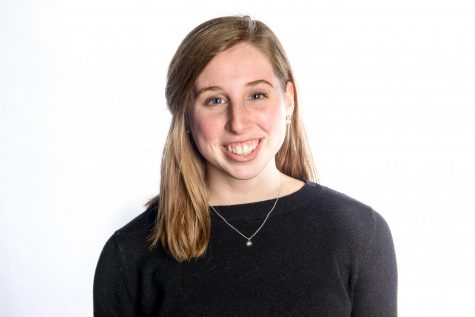
(she/her/hers)
Jenna Galligan is the Films Editor and Documentary Director at The Daily Iowan. She is a senior at the University of Iowa majoring in...






